Episode 2 of 4
Episode 3 of 4
Episode 4 of 4

Most people do not buy their first home with the idea of living there forever. But increasingly, seniors are not only living longer but are opting to “age in place” – to stay in their homes where they are happier and more comfortable.

Most people do not buy their first home with the idea of living there forever. But increasingly, seniors are not only living longer but are opting to “age in place” – to stay in their homes where they are happier and more comfortable.
In this series of videos, we follow the journey of John and Inge – a couple who decided to “age in place”, but with a twist – they moved from a 2 storey 4 bedroom home to a bungalow while in their sixties. They made the modifications ahead of time, so they could be in control of the process, rather than have to consider making the changes on an emergency basis.
Most consumers do not yet recognize Home Modification as an industry. Why? Perhaps it has not been a priority in our society – until now. In an article published in Reuters (May 3, 2017), the following was reported: “The number of seniors in Canada exceeded the number of children for the first time last year, Statistics Canada said on Wednesday, pointing to the economic and social challenges facing the nation as the population ages.”
We must all start that conversation – NOW. We all must look into the future – our collective futures – and start to understand the needs of the consumer not only in the Home Health Sector, but in the Home Renovation and Home Modification sector as well.
When we tell governments, home builders and home renovators, consumer product industries, and our healthcare system what we want and what we need, we can all look forward to the possibility of ageing well, and ageing in place.
Episode 1 of 4
Episode 2 of 4
Episode 3 of 4
Episode 4 of 4

At the recent National Institute of Aging conference held in Toronto, I was a speaker representing OSOT and the Home Modifications Canada Steering Group. The afternoon session was lead by a presentation by Jamie Shipley, a knowledge transfer consultant with the Canada Mortgage and Housing Corporation. He and I have done presentations together before about accessibility for seniors wishing to Age in Place.

At the recent National Institute of Aging conference held in Toronto, I was a speaker representing OSOT and the Home Modifications Canada Steering Group. The afternoon session was lead by a presentation by Jamie Shipley, a knowledge transfer consultant with the Canada Mortgage and Housing Corporation. He and I have done presentations together before about accessibility for seniors wishing to Age in Place.
He asked that the members in the audience raise their hand if they were a “caregiver”. A few members of the audience raised their hands….
Then he asked how many of the audience help their family members (change in definition), and a significantly larger number of hands were raised.
Then, he asked that all the people who had their hands up, to keep their hands up, if those family members who needed care, were coming to their house over the holidays… and most of the hands went down…
The truth is, that most of us live in homes that are not “visitable” – what is visitable?
Visitable is now a term that encompasses adaptability, accessibility and inclusivity – it means that a home can be visited by almost anyone with no major impediments to access into the home or to the bathroom. Accessible is a concept that we as OT’s are more familiar with, but the drawback to this concept is that the issue is that it denotes that disability must exist. But age is not a disability – it is a normal life stage, and we in Canada are at the brink of a crisis….
According to statistics provided by the CMHC, by 2038, 24% of all Canadians will be seniors 65+, and 35% will be 55+. And to bring it back to today – a full third of Canadians now over 65 have some form of disability.
With all of us marching into this ageing cohort – where will we all live? There are no more Long Term Facilities that the province is building, and homes, townhomes and condominiums are being built all over without thought or incentive to making them spaces where we can easily and safely age…..
Many designers, architects, and contractors are now promoting “Inclusive or Universal Design Principles”. These include:
And where do we fit in? Well, Universal Design is not universal, and an OT has the knowledge skills and training to help a person function in their environments. The other issue, is that OT’s have their eye on function – and the client, and the future… This unique perspective is now being understood and valued.
To focus the lens just a bit more – Fall Prevention has been identified as the most important issue that we face and will be facing in healthcare when it comes to our ageing population. ( Tilak Dutta, PEng, Toronto Rehab)
According to Centre for Disease Control published study:
And then, when we think about Dementia…
In order to prevent falls, the risks and risk factors need to be understood. As OT’s we can assess this, and provide a solution to meet the challenge. If it is low vision – then contrasting colours should be used. If it is reduced strength, then exercise may be indicated. If the issue is balance – is the underlying cause cardiac or neurological, or a change in medication? And what transfers are affected – how do we keep our clients from falls?
Best Practice…
Based on recommendations from the American Geriatric Society and British Geriatric Society (2010) updated in 2016 in: “Clinical practice Guideline: Prevention of Falls in Older Persons’, the summary of recommendations include:
“a home environment assessment carried out by a health care professional should be included in a multifactorial assessment and intervention for older persons who have fallen or who have risk factors for falling”
Although it does not specify Occupational Therapy, it is clear that this work is in our realm. We have the ability to assess the person, their environment, and their occupation, and make recommendations that make sense for our clients now, and in the future.
As we approach the Holiday Season, we the Board who serve OSOT on your behalf wish you all a safe, and happy holiday season, and a prosperous and healthy 2017.
As you begin to gather up your family and friends, start thinking of your own homes, your own spaces….your future selves and your own careers. This my colleagues, is where all our futures lie.
Home is where people want to age , they are happier and it is cheaper….
Prof. Barry Trentham,
O.T. Reg. (Ont) UofT
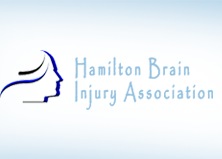
 Hamilton Brain Injury Association
Hamilton Brain Injury Association
Once again we are happy to be supporting the 2016 Hamilton Brain Injury Association (HBIA) Dinner being held at the Liuna Station in Hamilton on November 17th, 2016. This will be the 10th annual fundraising dinner for Hamilton Brain Injury Association. LDOT is excited to be a centre piece sponsor this year and happy to show our support by purchasing a full table and will be attending as a team to show our support.
HBIA is an asset to our community providing support, education and advocacy for brain injury survivors and their families.
ABILITY – the correct skills and/or mental and physical fitness to perform in a competent way.
ABNORMAL – different from the average; inappropriate with regard to the standards of society, social role or the existing set of circumstances.
ABSTRACT ATTITUDE- an objective, detached, impersonal state of mind.
ABSTRACT CONCEPT – a concept or idea not related to any specific instance or object and which potentially can be applied to many different situations or objects. People with cognitive deficits often have difficulty understanding abstract concepts.
ABSTRACT THINKING – the ability to apply abstract concepts to situations and surroundings. It is characterized by adaptability in the use of ideas and generalization.
ACTING OUT – impulsive; anti-social behavior.
ACALCULIA – the inability to perform simple problems of arithmetic.
ACUITY – sharpness or quality of a sensation. Keenness of perception.
ACUTE – sharp, severe. 2. Having rapid onset, severe symptoms and a short course. The early stages of an injury (as opposed to chronic, which is long term).
ADAPTIVE / ASSISTIVE EQUIPMENT – a special device which assists in the performance of self care, work, play or leisure activities.
ADL – activities of daily living. Routine activities carried out for personal hygiene and health such as eating, dressing, grooming, shaving, etc. Nurses, occupational and physical therapists are the main coaches for ADL, which is sometimes called DLS or daily living skills.
ADVOCACY – support; help, promoting a cause.
AFFECT – feeling tones; emotions; the outward signs of individual emotions.
AFFECTIVE – having to do with emotions.
AGITATION – a state of restless activity such as pacing, crying or laughing without apparent reason.
AGGRESSIVENESS – a state of irritability; combativeness.
AGNOSIA – failure to recognize familiar objects although the sensory mechanism is intact. May occur for any sensory modality.
AMBIVALENCE – contradictory feelings about an object, person or action, emotion, idea, situation, etc. .
AMBULATION – to walk.
AMNESIA – lack of memory about events occurring during a particular period of time.
ANEURYSM – a balloon-like deformity in the wall of a blood vessel. The wall weakens as the balloon grows larger, and may eventually burst, causing a hemorrhage.
ANOMIA – inability to recall names of objects. Persons with this problem often can speak fluently but have to use other words to describe familiar objects.
ANOSMIA – loss of the sense of smell. SYN: anodmia
ANOXIA – a lack of oxygen. Cells of the brain need oxygen to stay alive. When blood flow to the brain is reduced or when oxygen in the blood is too low, brain cells are damaged.
ANTERIOR INJURY – front.
ANTEROGRADE AMNESIA – inability to consolidate information about ongoing events. Difficulty forming new memories. Shrot- term annesia.
ANTERO-LATERAL INJURY- front and to the side.
ANTERO-POSTERIOR INJURY- gront and to the back.
ANTICONVULSANT – meditation used to decrease the possibility of a seizure (e.g., Dilantin, Phenobarbital, Mysoline, Tegrtol).
ANTI-SOCIAL BEHAVIOR – behavior which is contrary to the customs, standards and moral principles accepted by society.
ANXIETY – feelings of apprehension, uneasiness, agitation, uncertainty and fear because of threat or danger.
APATHY – indifference. Lack of emotiom, concern or interest.
APHASIA – the change in language function due to an injury to the cerebral cortex of brain. It causes partial or total loss of ability to express oneself and/or to understand language.
APRAXIA – the inability to produce voluntary speech due to a deficit in motor (muscle) programming caused by brain damage.
ARACHNOID MEMBRANE – the middle of three membranes protecting the brain and spinal cord.
AROUSAL – being awake. Primitive state of alertness managed by the reticular activating system (extending from medulla to the thalamus in the core of the brainstem) activating the cortex. Cognition is not possible without some degree of arousal.
ARTERIAL LINE – a very thin tube (catheter) inserted into an artery to allow direct measurement of the blood pressure, the oxygen and carbon dioxide concentrations in arterial blood.
ARTICULATION – movement of the lips, tongue, teeth and palate into specific patterns for purposes of speech. Also, a movable joint.
ASSESSMENT – an evaluation of a patient based on the following information: 1. the subjective report of the symptoms by the patient. 2. the progress of the illness or condition. 3. the objective findings of the examiner based on tests, physical examination and medical history.
ATAXIA- a problem of muscle coordination not due to apraxia, weakness, rigidity, spasticity or sensory loss. Caused by lesion of the cerebellum or basal ganglia. Can interfere with a person’s ability to walk, talk, eat and to perform other self care tasks.
ATTENTION – the ability to focus on given task or set of stimuli for an appropriate period of time.
ATTENTION DEFICITS – impaired ability to concentrate.
AUDIOLOGIST – one who evaluates hearing defects and who aids in the rehabilitation of those who have such defects.
AUTOMATIC – spontaneous; involuntary
AUTOMATISM – automatic actions or behavior without conscious volition or knowledge. Such episodes might last for a few minutes or a few days. During such episodes, the person appears normal but, is actually in a trance like state. While in such a state the person is not responsible for his acts and should not be left alone. He may carry out complicated acts without remembering having done so. Such episodes have been associated with severe emotional distress and temporal motor epilepsy.
AUTONOMIC NERVOUS SYSTEM – the part of the nervous system that controls involuntary activities, including heart muscle, glands, and smooth muscle tissue. The autonomic nervous system is subdivided into the sympathetic and parasympathetic systems. Sympathetic activities are marked by the flight or fight emergency response, initiated by way of the transmitter norepinephrine (adrenaline). Parasympathetic activities are known by lowered blood pressure, pupil contradiction and slowing of
the heart.
REDUCED AWARENESS – insight; understanding is not clear.
AXON – the nerve fiber that carries an impulse from the nerve cell to a target, and also carries materials from the nerve terminals back to the nerve cell. When an axon is cut, proteins required for
its regeneration are made available by the nerve cell body. A growth cone forms at the tip of the axon. In the spinal cord, a damaged axon is often prepared to re-grow, and often has available a supply of materials to do so. Scientists believe it is the toxic environment that surrounds the axon, and not the genetic programming of the axon itself, that prevents regeneration.
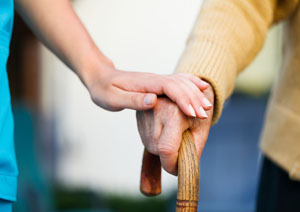

If you are in the position to purchase or modify your “forever home”, you may want to give some thought to how your home will accommodate you as you age. Ageing in place is something that you may be able to do relatively easily, if you take aging in place into consideration when you purchase or renovate your home. These are a few things that you should consider…
Access, Access, Access
How easily can you access the home? If you do not have a level walkway and front entrance, is there enough room to have a lift or ramping installed (ramping requires 12 feet of run for every one foot of rise), or is there easy access through the garage, where you are protected from the elements? Did you know, if you build a walkway at 1:21 it no longer is a ramp, and you can landscape it to beautify your curb appeal?
Can you access the main floor? Is it open and without those pesky changes in level (think split level townhouses, or even those pesky 1960’s sunken living rooms) You will need this if you have any mobility issues and need to use a walker or wheelchair.
And speaking of walkers and wheelchairs, are the hallways and doorways wide enough to accommodate you and your mobility aid around a corner? If you have a narrow door to the bathroom, and you are renovating it, budgeting for door widening is a must!
And the last thing about access – is there a bathroom on the first floor that has or is big enough to accommodate a three piece bath suite? Not having the ability to accommodate a bathroom is the number one reason people with mobility issues move residence.
While you’re at it…
Already mentioned was widening the doorway to the bathroom. While you’re at it, widen the door to your bedroom, or any room in which you have an expectation of privacy.
And if you are renovating the bathroom, consider installing a rite height toilet – it saves scrubbing a raised toilet seat. Grab bars are no longer a sign of disability. They can be a design statement. Several bathroom fixture manufacturers have designed soap holders and towel racks to double as grab bars. Lastly, those fancy bathtubs are great to soak in, but treacherous to get in and out of safely if your balance or strength is compromised. Think ahead – and think of your lifestyle – do I prefer bathing or showering? Barrier free showers and walk-in baths may be something that you adopt now, rather than in the future.
Managing the elements
We have mentioned the garage, but this is such a under utilized space. With some careful planning, you can avoid using the garage as the main storage space for your home, and have your accessibility to your home sorted out. It protects you from the elements when getting into your home, but also in and out of your car. A shorter driveway will lessen the need of contracting snow removal services as you age. Also, if you have your ramping or lift in the garage, you do not change the curb appeal of your home, nor do you advertise that a vulnerable individual may live there.
If you have any questions about Ageing in Place – contact us at info@LDOT.ca
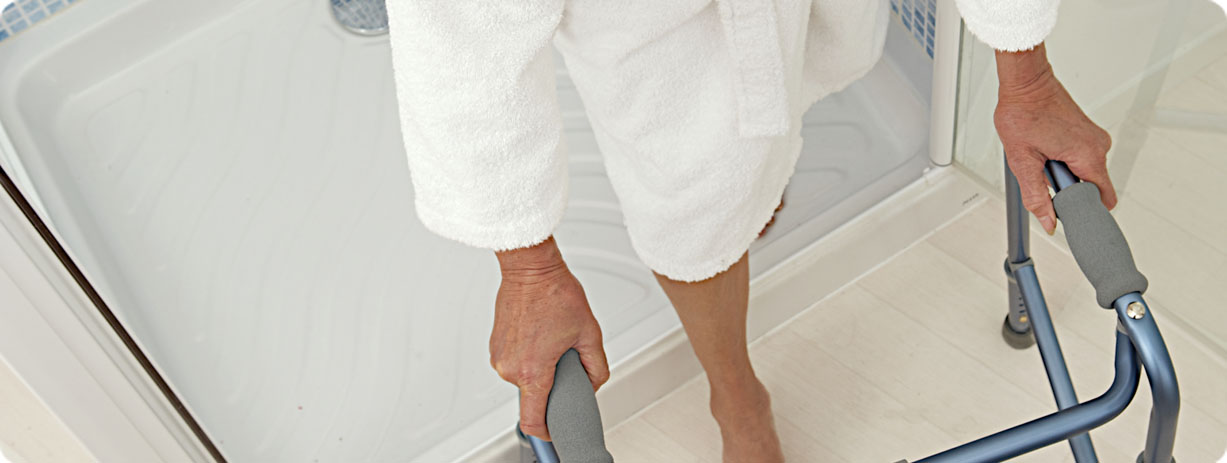
 Fall Prevention – Ageing in place – Staying put – Accessible at Home – Inclusive Space, all are phrases that are being used to address the issue, no – crisis, that is facing us here in Canada.
Fall Prevention – Ageing in place – Staying put – Accessible at Home – Inclusive Space, all are phrases that are being used to address the issue, no – crisis, that is facing us here in Canada.
With the population ageing, the last baby boomers hitting 55 years, with no further long term care facilities being built in the province of Ontario, ageing Ontarians and their caregivers are faced with the reality that to stay healthy, one must learn to live safely at home . Why? According to CDC published study:
So while everybody talks about accessibility, for our ageing population, the concern is really Fall Prevention.
How can we help? We provide:
As regulated health professionals, we do not pay or accept referral fees – our recommendations are in your best interest, not ours
Want more information? Please contact info@LDOT.ca or call our office directly.
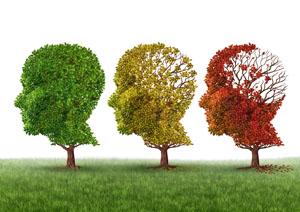
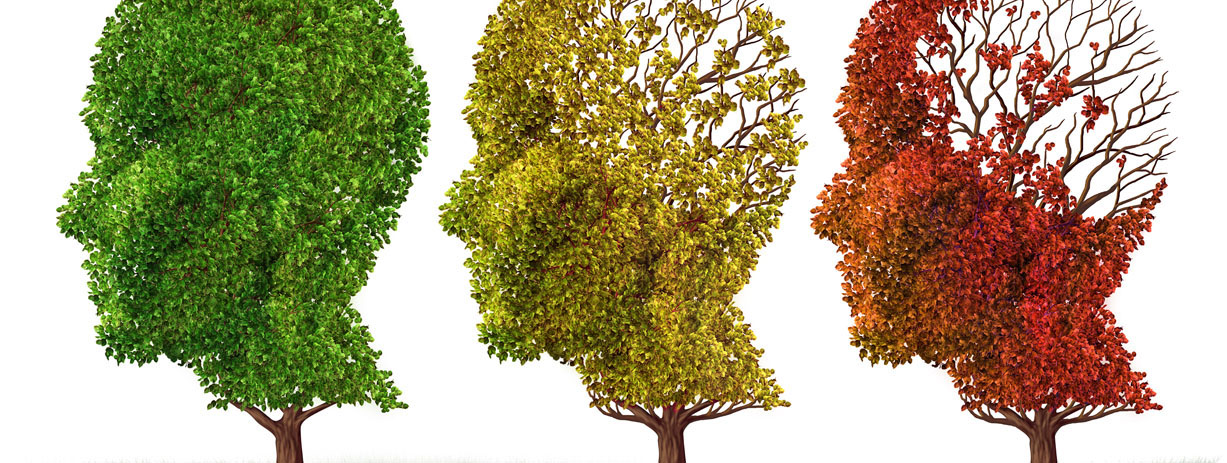 In this month’s series of blogs at Lesya Dyk O.T. Services – we are giving Alzheimer’s a 360 degree treatment. Occupational therapists have an important role in helping clients who have been diagnosed with Alzheimer’s dementia live their lives as functionally and productively as possible.
In this month’s series of blogs at Lesya Dyk O.T. Services – we are giving Alzheimer’s a 360 degree treatment. Occupational therapists have an important role in helping clients who have been diagnosed with Alzheimer’s dementia live their lives as functionally and productively as possible.
I dedicate this series to my uncle Hans (not his real name), who is defying the odds and is living with the disease, staving off the worst of the functional difficulties with exercise and activity. He is the reason that I am talking to some of the best resources that we have in the community to help us with answers to the tough questions.
As an Occupational Therapist, I have treated many people with Alzheimer’s Dementia, as well as other types of dementia’s, but never as the primary diagnosis. I have encountered individuals who have had a traumatic brain injury and whose Alzheimer’s dementia was subsequently accelerated. I have also encountered persons with Chronic Pain Syndrome who “drank the pain away”, and developed Korsakoff’s dementia as a result. And there have been other individuals who have had a fall and a fracture, and the subsequent lack of mobility and change in function, seemed to trigger a worsening in cognitive function that was already teetering on the edge.
Some Noteworthy statistics:
In all cases, a thorough assessment by the treatment team was key to ensuring that the proper diagnosis was established, and all the treatment recommendations were properly implemented. Maintaining function, including activities of daily living and exercise, was a key to slowing down the decline of cognitive functions and central to the OT intervention. And lastly, educating the family, especially the caregivers was important. Often the emotional sequelae of dementias come as a shock to family, and can be very hurtful. Knowing how to best support the family was often a role in helping the client stay home as long as possible.
We hope you find this informative – lets keep the awareness high because it is an issue for us all– Canada ranks 3rd in the world behind Finland and the U.S. for deaths related to Alzheimer’s. (World Health Ranking) And remember this: “Never give up hope. If you do, you’ll be dead already.–Dementia Patient, Rose (“The Inspired Caregiver”)